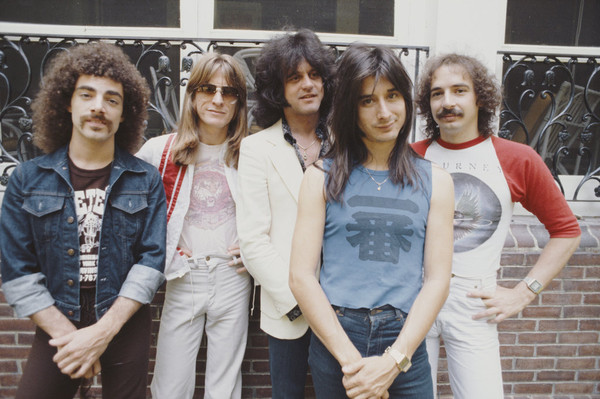American rock group Journey was founded in 1973 in San Francisco. The band, which was once known as the Golden Gate Rhythm Section, changed its name to Journey and issued its debut album under that name in 1975. The band went on to sell millions of albums and have multiple singles on the charts throughout the following ten years, making them one of the most popular and influential bands of the time.
Hard rock, pop, and progressive rock were all combined in the music of Journey, which had soaring melodies, complex orchestration, and strong voices. Lead vocalist Steve Perry’s unique voice, guitarist Neal Schon’s skill, and Ross Valory and Steve Smith’s reliable rhythm section all contributed to the band’s distinctive sound.
A generation was characterized by Journey songs. There is a Journey song for every situation, whether you are leaving on a road trip or closing down the neighborhood pub, from “Don’t Stop Believin'” to “Separate Ways.”
In terms of PR, Journey was unquestionably ahead of their time, especially when it came to professionalizing its live performances and introducing elements of live production that are now considered standard practice. The group received a lot of criticism for how they were promoted, but it is their music, a unique fusion of guitar-driven hard rock and vocal-driven pop, that has lasted through the years and appealed to multiple succeeding generations.
Nobody doubts knowing a band that makes a living off of emotive songs and anthems that are so affecting they make you grimace. You either love them or hate them. That’s because some of the most well-known rock anthems were created by the band Journey. Here are 5 of those songs.
Open Arms
The chorus of “Open Arms” laments a relationship that has grown distant in hopelessness. Several artists, including Boyz 2 Men and Celine Dion, have recorded this well-known love ballad. While he was a member of the Babys, Cain apparently proposed the music for “Open Arms,” but vocalist John Waite reportedly rejected it as being too romantic. As he and Perry finished the song, the other members of Journey weren’t too disappointed, especially Schon, who thought the song was too light for the band. Despite the criticism, the group recorded and released the song, which went on to hold the No. 2 place on the Billboard chart for six weeks straight and became a staple of popular culture.
Wheel in the Sky
The drums pound against far-off guitar chords in the song “Wheel in the Sky,” which has a tighter rock structure and a harsher sound like an outlaw driving through a desolate desert.
After hearing it, vocalist Robert Fleischman used it for a line that was set against a hard rock riff by Schon. Fleischman was replaced by Steve Perry, who added his own vocal style to the song.
Faithfully
“Faithfully” shows the challenges that artists face when traveling and away from their families. The keyboardist for the group, Jonathan Cain, is credited for dreaming up the song’s piano-based melody.
It only managed to reach position 12 on the charts, where it remained for 16 weeks. Yet since it has become a fan favorite, many people score it higher than when it is actually a falsehood.
Cain penned “Faithfully,” a melancholy piano-based song, about the difficulties of traveling while attempting to preserve a relationship with his wife at home. Strangely, the marriage it was intended to honor—which ended in divorce in 1987—has outlasted the song by a significant margin.
Any Way You Want It
The rock band Thin Lizzy and its bassist Phil Lynott are said to have had a big impact on the song. As the Irish band was on tour across the United States in the summer of 1979, Lynott shared a rhyming scheme exercise with guitarist Neal Schon, vocalist Perry, and the group.
Departure, which boasted an edgier sound than earlier Journey songs and was recorded in a setting more akin to “live in the studio,” is exemplified by the tune, which is driven by Schon’s quick-handed solos and Perry’s high-octane vocal delivery.
Don’t Stop Believin’
This is Journey’s highest point of achievement. It was conceived during a practice at the band’s warehouse headquarters in Oakland, California, and gave rise to the “streetlight people” of Hollywood’s Sunset Strip and the mythical South Detroit. Moreover, it saves the chorus until the guitar solo is at the song’s conclusion. A hit among all generations? Believe it with joy. The song’s success across generations is due in part to its uplifting message and in part to its arrangement, which is enjoyed by both hard rock and vocal-focused pop audiences. It was written by Cain, Perry, and Schon.

